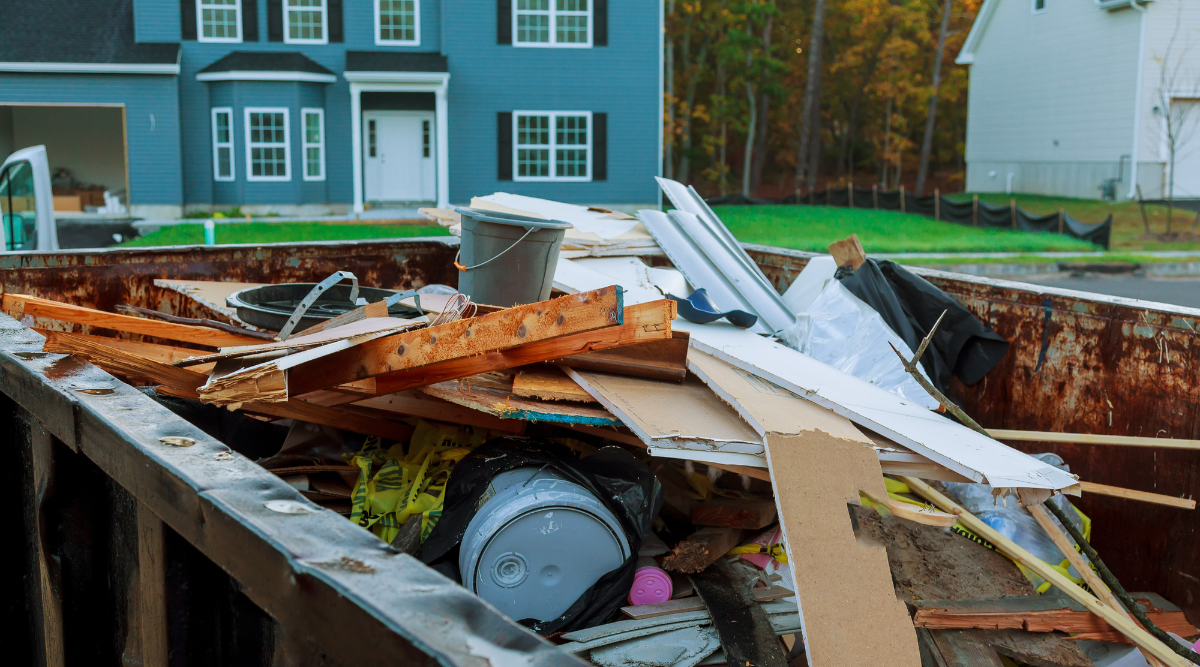Junking refers to the process of discarding unwanted items– such as furniture, electronics, clothes, and more— often due to convenience or for the appeal of buying new. In today’s fast-paced world, it’s become normal to toss things out rather than find a way to reuse or rehome them.
The Rise of Convenience-Driven Disposal
Tossing unwanted items is often seen as the easiest way to remove an item. By simply rolling your bin to the curb and not thinking about where the items will end up, convenience now drives how we discard. But what feels efficient in the moment often has long-term consequences. This rising trend is sending millions of reusable goods straight to landfills—goods that could otherwise serve families, nonprofits, or entire communities. When we prioritize convenience over sustainability, we waste not just resources, but opportunities for economic circulation and social good. The result? A system that looks seamless on the surface but stalls progress and deepens our environmental footprint.
The Environmental Consequences of Junking
Landfills across the globe are reaching critical mass. Each year, Americans generate and throw out over 292 million tons of waste, much of it perfectly reusable. 62% of the waste, or 181,040,000 tons of waste, is ultimately dumped into landfills or burned in incinerators. As landfills overflow, local ecosystems suffer, and surrounding communities face health and environmental risks.
Carbon Footprint of Waste Disposal
Disposing of furniture or electronics doesn’t just take up space—it also produces greenhouse gases. The United States has 3,000 active landfills, and 10,000 closed landfills. These landfills– including the closed ones which are full– produce methane gas as a byproduct of the organic decomposition of the waste in the landfill. Methane is “84 times more effective at absorbing the sun’s heat than carbon dioxide, making it one of the most potent greenhouse gases and a huge contributor to climate change” (The Hidden Damage of Landfills).
E-Waste and Toxic Leaks
Electronic waste, or e-waste, can be especially damaging. Old laptops, printers, and phones leak toxic substances like lead and mercury into the soil and groundwater, posing long-term health risks. Additionally, e-waste is not biodegradable. These thrown away items will sit in the landfill forever. While processes are in place to salvage the reusable parts of e-waste, the process is risky for the workers. The practice often exposes workers to high levels of contaminants such as lead, mercury, beryllium, thallium, cadmium and arsenic, as well as brominated flame retardants (BRFs) and polychlorinated biphenyls. These contaminants can lead to irreversible health effects such as cancer, miscarriages, diminished IQs and neurological damage.
The Economic Impact of Throwing Things Away
The price of junking isn’t just environmental—it hits your wallet, too. Many traditional junk removal services charge high prices, just to send everything right to landfill no matter what the condition of the items are.
More importantly, these aren’t one-time hits. The more often we dispose instead of donate, the more we normalize unnecessary waste—and that drives up waste management costs at a community level. Choosing to reuse or donate items instead of junking them doesn’t just save money—it helps redistribute valuable resources to people and places that need them most.
The Lost Value of Usable Goods
Every item tossed aside represents more than just clutter—it’s a missed opportunity to support someone in need. A working office chair, a gently used fridge, or a sturdy couch could make a real difference in a veteran’s home, a nonprofit office, or a family shelter. Yet each year, Americans discard over 12 million tons of furniture, much of it still usable.
When we junk these items, we remove them from the cycle of reuse, fueling demand for costly and resource-intensive replacements. The result is not just material waste—it’s a loss of community value, environmental savings, and human impact.
The Fast Furniture and Fast Fashion Epidemic
Retail trends push fast cycles of consumption—encouraging consumers to replace instead of repair. Fast fashion and furniture, while seemingly affordable, wear out quickly and feed the waste stream at alarming rates. The fashion industry churns out nearly 100 billion garments annually, but a staggering 92 million tons end up in landfills each year.
Many products today are intentionally built with short lifespans, making them harder to repair. Nearly 99% of consumer products are now designed to be obsolete before their time, inflating waste and cost to consumers. This strategy boosts corporate profits but burdens the planet, as well as your wallet.
Reuse as a Solution to Junking
Reuse involves giving items a second (or third) life. Whether it’s rehoming a couch, donating office equipment, or refurbishing electronics—reuse interrupts the waste cycle.
Benefits of Choosing Reuse Over Dumpsters
- Environmental Savings: Reuse reduces the need for manufacturing new items, conserving raw materials and energy. It also diverts waste from landfills, cutting down on emissions and pollution. A study by Circle Economy found that circular economy strategies could reduce global greenhouse gas emissions by a staggering 39% if successfully implemented.
- Financial Benefits: Whether you’re saving money by acquiring reused items or avoiding landfill fees, reuse makes financial sense. Donors can also receive tax deductions in many cases. And the tax deductions add up–the Tax Policy Center found that “a donor in the 24 percent tax bracket pays 24 cents less tax for every dollar donated.”
- Community and Social Impact: Reused goods often go to schools, nonprofits, shelters, or veterans. What you no longer need might become a vital resource for someone in need.
Circular Economy: Making Reuse the Norm by Donating Your Goods
A circular economy minimizes waste by keeping resources in use as long as possible. Unlike the “take-make-dispose” model, it emphasizes sustainability and regeneration. Reuse is a cornerstone of the circular economy. By extending the life of goods, it supports economic systems that are sustainable, local, and resilient.
Junking may seem like the easiest solution—but it comes at a cost. Environmentally, economically, and socially, reuse is the smarter, more compassionate choice. ReSupply makes giving simple, providing next-day, at-home donation pickups. By giving your items a second life, you’re helping communities, reducing waste, and leading the way toward a more sustainable future.
Ready to declutter the right way? Schedule a donation pickup with ReSupply by calling (617) 917-9625 or book online by clicking below.





